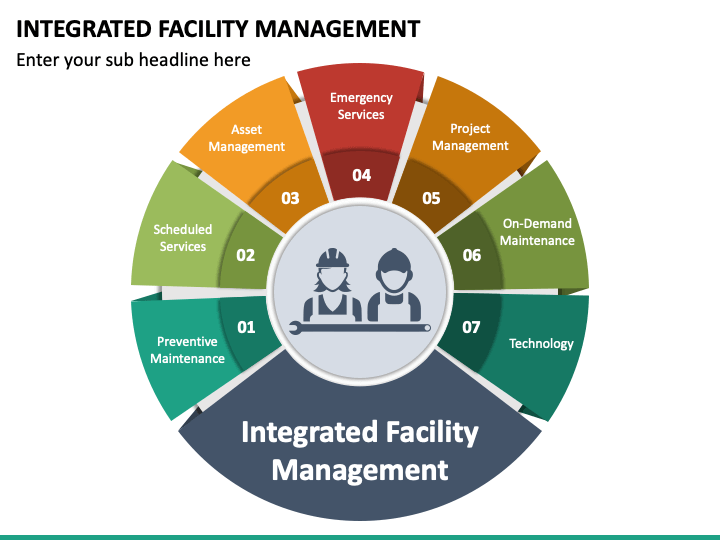How Total Facility Management Helps Businesses Enhance Asset Utilization
How Total Facility Management Helps Businesses Enhance Asset Utilization
Blog Article
Just How Total Facility Management Improves Upkeep and Procedures
Total Facility Management (TFM) stands for a transformative change in exactly how companies approach maintenance and procedures. By leveraging data-driven methods and integrated technology, TFM not just anticipates and reduces potential issues yet also enhances resource appropriation and improves efficiency. The ramifications of taking on such a comprehensive framework prolong beyond simple performance; they discuss sustainability and lasting possession conservation. As we discover the multifaceted advantages of TFM, one may question how these practices can be tailored to resolve distinct functional difficulties.
Enhanced Upkeep Strategies
Improved Upkeep Methods are important for optimizing the efficiency and long life of facilitiess. These approaches encompass a systematic strategy to maintenance that highlights positive measures, anticipating analytics, and condition-based tracking. By applying such strategies, organizations can effectively lower unintended downtimes and decrease operational disturbances.
One vital component of improved upkeep is making use of data-driven decision-making devices. These devices enable facility supervisors to analyze historical efficiency data, recognize patterns, and projection prospective failures before they happen. This predictive maintenance strategy not just prolongs the life cycle of equipment yet additionally enhances safety and security and compliance criteria.
Educating and empowering upkeep personnel are just as crucial in implementing improved approaches (Total Facility Management). Trained staff can carry out regular inspections and address minor problems prior to they intensify. In addition, adopting a detailed property management system promotes tracking of equipment standing, upkeep background, and organizing of preventive procedures
Streamlined Operational Workflows
Maximizing functional process is vital for the total performance of facility management. By implementing streamlined procedures, companies can reduce redundancies, decrease delays, and boost efficiency. A well-structured operational process permits facility managers to allot sources efficiently, making sure that tasks are finished in a prompt way.
Utilizing facilitiess management software application can automate routine tasks such as work order management, inventory monitoring, and organizing. Clear interaction networks among team participants foster partnership and accountability, even more boosting operational performance.
Standardizing treatments is one more essential element. Establishing ideal practices assists guarantee that all personnel are aligned in their strategy, reducing the chance of errors and boosting solution delivery. Normal training and updates on workflow procedures additionally play an important duty in preserving uniformity and effectiveness.
Eventually, structured operational operations add to a much more responsive facility management system, permitting organizations to concentrate on tactical campaigns rather than being stalled by administrative worries. By prioritizing effectiveness, facility supervisors can considerably boost the overall performance of their operations.
Proactive Issue Resolution

Normal examinations and keeping track of systems play an essential function in this process, enabling facility managers to collect data and prepare for possible failings. In addition, cultivating open communication networks amongst staff participants encourages the early reporting of problems, even more promoting timely resolutions.
Executing a detailed facility management software program can enhance the monitoring of maintenance activities and issue coverage, offering beneficial understandings into recurring troubles and their source. This data-driven method permits for notified decision-making and prioritization of sources.
Inevitably, positive issue resolution not only maintains the stability of facility operations but also boosts worker satisfaction and security. By purchasing methods that concentrate on avoidance, organizations can produce a more resilient and effective operational environment, establishing a strong structure for future growth and success.
Price Effectiveness and Source Management
Exactly how can companies achieve a balance in between price performance and reliable resource management in facility operations? The assimilation of total facility management (TFM) offers a strategic framework that improves economic efficiency while optimizing view website source allocation. By settling solutions, organizations can streamline procedures, minimize redundancies, and leverage economic climates of range.
Efficient source management begins with a complete assessment of existing properties and functional procedures. Utilizing information analytics, organizations can recognize underutilized sources and address ineffectiveness. This enlightened method makes it possible for the implementation of targeted upkeep routines, thus prolonging property life and minimizing unexpected downtime.
Training and development of facility management personnel better improve price efficiency by furnishing them with the skills required to manage resources sensibly. Inevitably, by embracing a holistic method to facility management, organizations can achieve substantial price financial savings while Going Here making sure that functional efficiency stays a leading priority.
Sustainability and Ecological Impact
The integration of total facility management (TFM) not just improves expense efficiency yet additionally plays a pivotal role in promoting sustainability and decreasing ecological impact. By embracing a holistic strategy to facility procedures, TFM promotes the execution of lasting techniques that lessen source usage and waste generation.
One of the crucial elements of TFM is the optimization of power use. This consists of the fostering of energy-efficient technologies, regular maintenance of a/c systems, and the application of clever structure management systems. These actions not just reduced energy expenses yet likewise substantially decrease greenhouse gas discharges.
Moreover, TFM advertises making use of lasting materials in facility maintenance and renovation tasks. By prioritizing eco-friendly items and techniques, facilitiess can lower their total environmental impact while cultivating much healthier indoor settings.

Conclusion
In verdict, Total Facility Management significantly enhances upkeep and operations through methodical approaches that stress predictive analytics and condition-based monitoring. TFM advertises sustainable practices, ultimately leading to enhanced facility management outcomes and a culture of continuous renovation within organizations.
Total Facility Management (TFM) represents a transformative change in exactly how organizations approach maintenance and useful link procedures. Using facilitiess management software application can automate routine jobs such as job order management, supply tracking, and organizing.How can organizations accomplish a balance between cost effectiveness and effective resource management in facility procedures? The integration of total facility management (TFM) gives a strategic framework that improves financial efficiency while optimizing source allowance.In conclusion, Total Facility Management considerably boosts upkeep and operations with methodical strategies that highlight predictive analytics and condition-based tracking.
Report this page